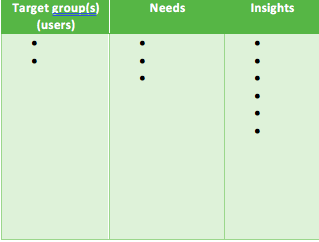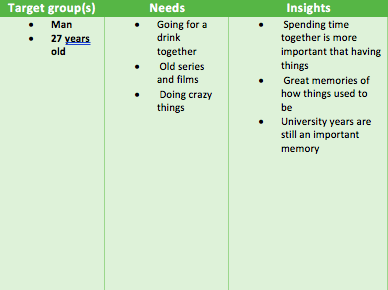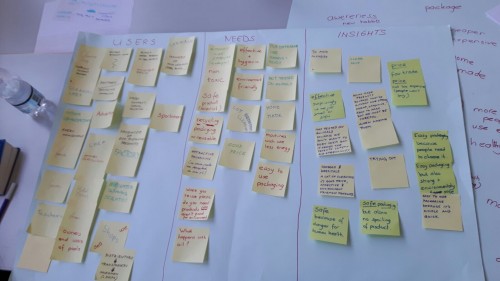How
Perform an analysis of the insights from the empathy phase. The table left is a useful tool for this.
You can complete the design phase by finishing one of these sentences:
How can we design ........, so that ........
How can we ....... so that ...... (target group)....... that...... (insight)....... feels more/less .......


